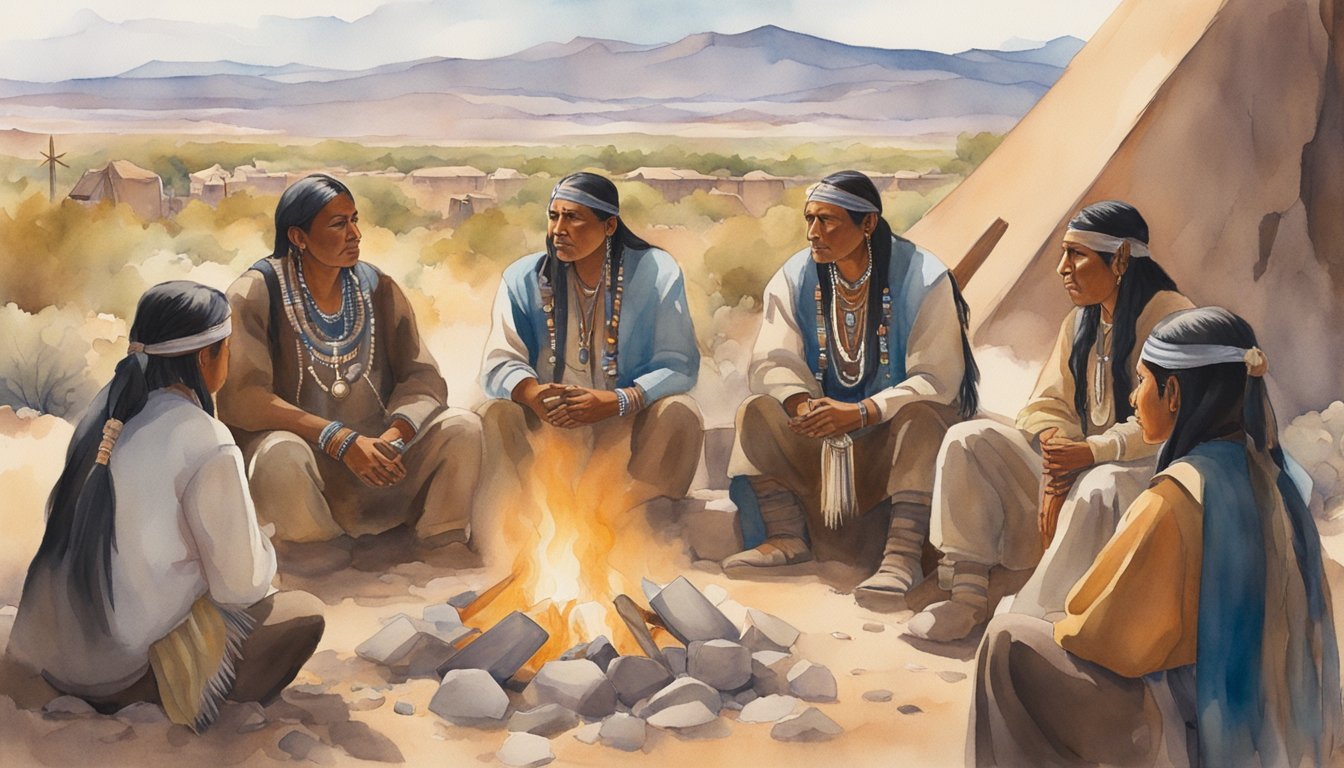Cultural Heritage and Practices
Artistic Expressions
Southwest Native American tribes, such as the Pueblo and Navajo, have a rich artistic heritage. They are known for their beautiful pottery, intricate baskets, and turquoise jewelry. Pueblo Indians, for example, are renowned for their skill in making pots with intricate geometric designs. They used different types of clay and pigments to create vibrant colors and patterns. The Navajo, also known as Diné, adopted some of the artistic practices of the Pueblo Indians, but also developed their own techniques, such as sand painting and silver and turquoise jewelry.
Navajo weavers are also famous for their sheep wool textiles, which are woven on handmade looms. Their rugs and blankets display beautiful patterns and colors, reflecting strong tribal aesthetics.
Traditional Foods and Agriculture
Agriculture played a significant role in the lives of the Southwest Native American tribes, particularly the Ancestral Pueblo people, who cultivated maize (corn) as their main crop. Corn was a staple in their diet and was used for various purposes, including food, medicine, and offerings. Other essential crops were beans, squash, and cotton.
In addition to agriculture, hunting and gathering played a significant role in the food culture of tribes like Hopi and Zuni. They hunted animals such as deer, rabbits, and wild turkeys, and gathered fruits, nuts, and vegetables.
Adobe architecture is another element distinctive of the Southwest Native American tribes. Tribes like the Towa, Tewa, and Tiwa built their homes using adobe, a natural building material made of clay, sand, water, and straw. These houses, known as Pueblos, were built to withstand the harsh weather and environmental conditions of the Southwest, providing shelter and a sense of community to their inhabitants.
Trading and bartering also played an important role in the societies of the Keresan, Zuni, Santa Ana, San Felipe, Santo Domingo, San Ildefonso, San Juan, Santa Clara, Tesuque, Isleta, Sandia, Picuris, Acoma, and Laguna tribes, facilitating the exchange of goods and services. The tribes traded pottery, textiles, and other goods with neighboring tribes and even with other distant communities.
Despite facing challenges throughout history, such as colonization, displacement, and cultural assimilation, the Southwest Indian tribes continue to preserve their rich cultural heritage and practices, making them a treasure of artistic expression and living history.
Societies and Lifestyles

Tribal Groupings and Languages
Southwest Native American tribes inhabited the regions of present-day Arizona, New Mexico, Utah, Colorado, and parts of Mexico. The region is home to diverse tribal groupings such as the Navajo, Apache, Ute, Hohokam, Ancestral Pueblo, and Mogollon peoples. These tribes spoke several languages and dialects, with some belonging to the Yuman, Quechan, Mojave, Cocopa, Maricopa, Hualapai, Pima, and Zia linguistic families, among others.
The Apache tribe, for instance, has various subgroups like the Western Apache, Chiricahua, Mescalero, and Jicarilla, each with unique dialects and traditions. While these tribes differed culturally, many held some key similarities, such as living in close connection with the environment and following a predominantly hunting and gathering lifestyle.
Interaction with the Environment
The arid climate of the American Southwest presented challenges in securing water for irrigation and farming. Tribes like the Hohokam and Anasazi developed advanced irrigation systems like canals to support agriculture. Crops commonly grown included corn, beans, and squash.
While many tribes relied on agriculture, others, such as the Apache, Navajo, and Ute, engaged in hunting and gathering. They used horses, introduced by Spanish settlers, to improve hunting abilities. The Apache tribe, for example, became skilled at chasing down game on horseback.
The Ancestral Pueblo peoples, including the Anasazi and Mogollon, built impressive structures like the ones found at Chaco Canyon. These architectural feats displayed their adaptation to the arid climate, as well as their intricate social organization.
Unfortunately, the Southwest tribes faced challenges brought on by drought and environmental changes. Drought significantly impacted their farming practices and forced some tribes to migrate in search of more favorable conditions or resources. Today, many of these tribes reside in reservations in the American Southwest or northern Mexico, continuously adapting to the shifting climate and environment while preserving their cultural heritage.

